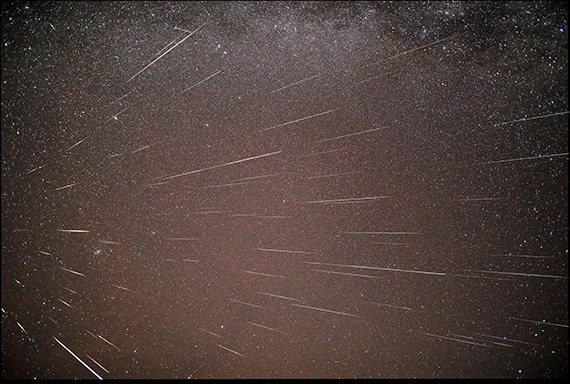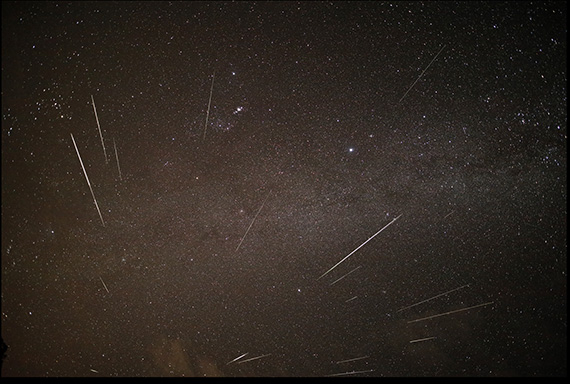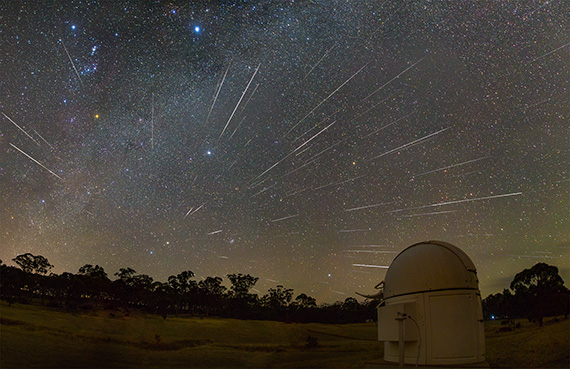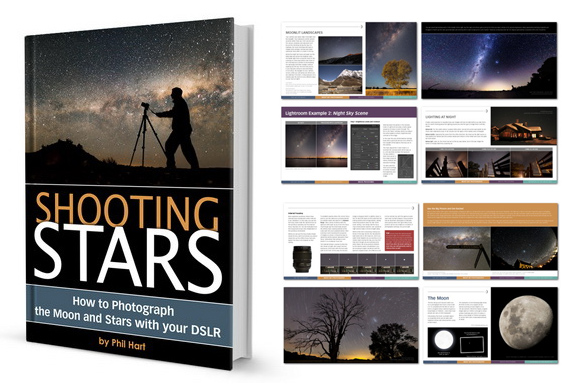Despite living in the southern hemisphere, I decided to have a crack at capturing Geminid meteors in December 2020. There was no moon and one or two nights of a clear forecast. But I was a bit rusty.
I was using a Star Adventurer 2i tracking mount to track a section of sky near the radiant through the night, so that the meteors captured could be “stacked” to show the effect of the meteors all appearing to come from the one “radiant” near the bright stars Castor and Pollux in the constellation Gemini.
The radiant near Castor and Pollux was not even visible above the horizon and trees at the time I set up the camera and mount (before going to bed for the night on December 13). I did poor job of framing the camera the first night, which meant I changed it the second night—which then meant I had two completely different frames to merge, rather than one simple frame that was common through the capture sequence.
I rattled off several thousand four-second exposures each night with a Sigma 20mm f/1.4 lens at ISO 12,800 (straight to JPG files). Out of these, I found about 70 exposures with meteors the first night (really the morning of the 14th) and another 20 or so on the second night, which was partly cloudy, and by which time the shower was also well past its peak.
I registered all the frames together from each night and then combined them in Photoshop, masking each layer to reveal just the meteor and with each layer set to “Lighten” blending mode. The stack of meteors from each night is shown below.

Meteor stack from first night (Dec 13-14)

Meteor stack from second night (Dec 14-15)
Because of how poorly framed these were, I subsequently shot a four-frame panorama of the same area of sky with the same lens around three weeks later. I then aligned each of the two meteor stacks with this panorama to produce the final composite image, shown below. When set against the horizon as it was at this moment in time, six meteors flew over the foreground trees, so I have digitally moved them into the nearby sky. All the other meteors are shown with correct alignment relative to the stars at the moment they occured, which reveals the nature and position of the meteor shower “radiant”. But having a foreground in the image must be considered “digital art”, as the sky was moving relative to the horizon through the several hours each night during which the meteors were captured. I hope that makes sense.
I happened to wake up while it was (just) still dark the first night, so stepped outside to observe a few meteors with my own eyes. I saw five Geminid meteors in the first minute and a half (including two almost simultaneously), which is astounding to observe from the southern hemisphere with the radiant low on the horizon. But then I saw only one more in the next 20 minutes, plus six sporadic meteors until the early summer twilight forced me back to bed. That’s what observing a typical meteor “shower” is like—keep your expectations very low.

Geminid meteor shower, composite image (Dec 13-15, 2020)
Needless to say, capturing images like this takes a bit of effort, and the processing even more so.
For Further Training:
Capturing star trails and other night sky scenes is truly one of the most technically difficult forms of photography. This popular in-depth eBook, Shooting Stars, written by astrophotography award winner Phil Hart, will show you how to shoot your own stunning images of the moon and the stars with just your digital SLR and a tripod.
We were able to arrange an exclusive 50% discount for PictureCorrect readers which ends soon. It also carries a 90 day happiness guarantee, if you are not satisfied just let us know and we will give you a full refund so there is no risk in trying it.
Deal found here: Shooting Stars – How to Photograph the Moon & Stars at 50% Off
Like This Article?
Don't Miss The Next One!
Join over 100,000 photographers of all experience levels who receive our free photography tips and articles to stay current:







Leave a Reply